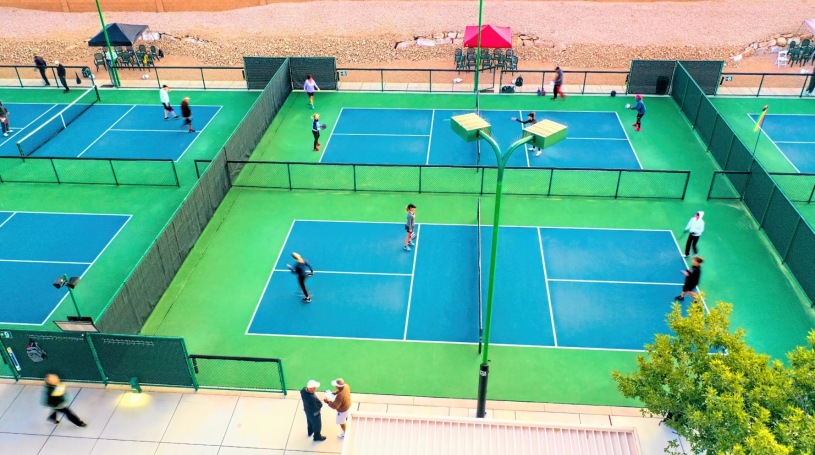Pickleball and its Challenges
by Bill Dix - CMCA, AMS, PCAM
Pickleball has surged in popularity over the past few years. With its unique rules and accessibility, it's attracting players of all ages. Its combination of fun, fitness, and community continues to drive its growth, making it one of the fastest-growing sports in the United States.
Pickleball was invented in the summer of 1965 on Bainbridge Island, Washington, by three dads—Joel Pritchard, Bill Bell, and Barney McCallum—who were looking to create a fun activity for their families. They combined elements of tennis, badminton, and table tennis, using a makeshift court and equipment they had on hand.
In 1984, the USA Pickleball Association (USAPA) was formed to promote the sport nationally and standardize the rules. Throughout the 1990s and into the 2000s, pickleball began to spread internationally. The very first pickleball courts in Utah were built in the SunRiver St George Community Association, an age qualified 55+ community of 2,308 homes. The 2010s saw a significant surge in popularity, fueled by a growing awareness of the sport through social media and community initiatives. Many retirement communities adopted pickleball for its health benefits and social aspects.
The sport is easy to learn, making it appealing to beginners and suitable for players of all ages, allowing people to engage without a steep learning curve. Pickleball is relatively low impact compared to sports like tennis. The smaller court size and slower ball speed reduce the stress on joints, making it a safer option for older adults or those with mobility issues.
Many communities, of all demographics and ages, have installed pickleball courts. This also brings a host of challenges, including safety, noise and lighting concerns.
When individuals are injured on HOA property, there is always the risk that a lawsuit may follow, alleging a dangerous condition, negligent upkeep, or other premises liability theories.
By far, the most common complaint with HOA is noise. The plastic pickleball ball makes a louder sound when it hits the paddle than the felt tennis ball. Pickleball paddles are made of graphite, while tennis rackets are made of strings; this means that pickleball paddles produce a louder noise when hit.
Play at night with lights has also been a contentious point between a community and the neighboring homes. With some residents alleging that late-night pickleball games caused “unreasonable interference with” their “enjoyment of their property.”
As a Community Manager or Board, what can you do to help resolve some of these issues? Here’s a few suggestions:
- Your governing documents may have specific rules or regulations about pickleball, such as noise restrictions or hours of play. If so, be sure to enforce these rules consistently.
- The best way to resolve conflict is often to talk to the people involved. Meet with the players, see if there is anything you can do to accommodate their needs, such as setting aside specific hours for pickleball play, use of lighting or installing noise-reducing fencing.
- Consult with your members before making any changes to the common areas.
By understanding the needs of the players as well as the homeowners and attempting to come to a compromise, your community can thrive with the excitement and enjoyment of fun activities and sports like pickleball!
Bill Dix - CMCA, AMS, PCAM
General Manager/ Division VP


